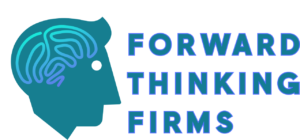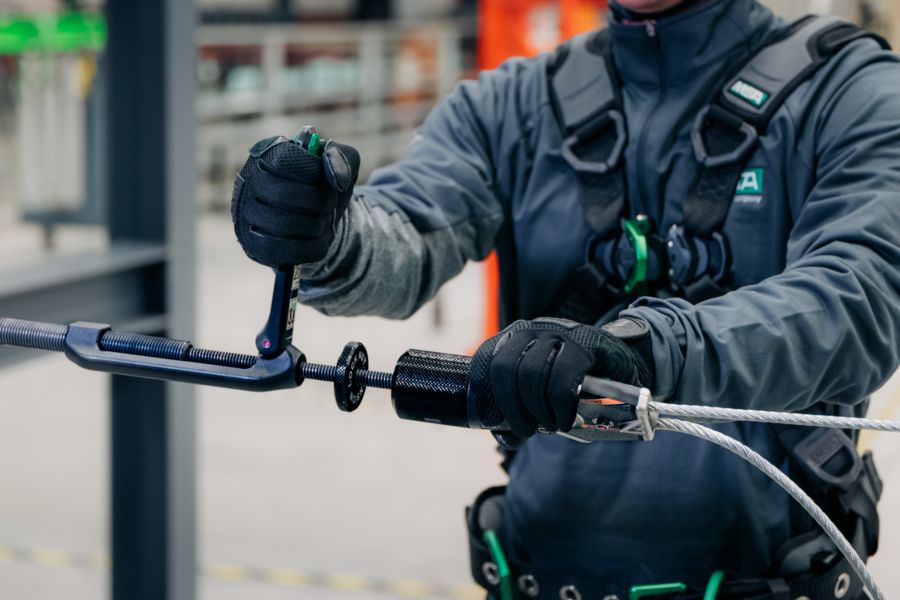
Why Inside Sales Training Defines Modern Revenue Growth
Inside sales has become one of the most essential engines of predictable revenue, especially as buyers prefer digital conversations over traditional face-to-face meetings. Teams that invest in structured training consistently outperform those that rely on intuition or outdated sales habits. Inside sales training equips reps with the right blend of communication mastery, technology proficiency, and psychological insight needed to influence today’s buyer. Companies now understand that improving skill depth has a far greater impact than simply increasing call volume. When reps learn how to navigate remote selling environments, they form stronger connections even across digital channels. Modern customers are more selective, more informed, and more demanding, which means trained reps often become the deciding factor between winning and losing a deal. As competition grows, organizations that prioritize comprehensive training tend to see faster sales cycles and better long-term customer relationships.
Core Competencies Every Inside Sales Rep Must Master
Inside sales success depends heavily on a rep’s ability to communicate clearly, confidently, and persuasively. This means learning how to structure conversations that gently guide prospects toward a shared direction. Strong listening skills are also vital because buyers rarely give direct answers; instead, they reveal signals reps must catch and interpret. Understanding buyer psychology helps reps anticipate objections, manage expectations, and identify motivators that impact decisions. Since most selling takes place through phone calls, emails, chat, and video, digital professionalism becomes an essential skill rather than an optional advantage. Reps must master how to project confidence, maintain presence, and create rapport without relying on body language cues. These competencies form the foundation that all inside sales training programs build on, preparing reps for high-pressure sales situations. When these skills blend together, the result is a rep who can earn trust quickly and move conversations toward positive outcomes.
Developing a High-Impact Inside Sales Training Framework
Creating a strong training program requires an intentional structure that aligns with both business goals and rep development needs. The first step is to assess rep readiness by identifying skill gaps through performance data, call reviews, and role-play assessments. This helps trainers design a curriculum that bridges real weaknesses rather than relying on generic sales lessons. Effective frameworks always balance theory with practical application so reps understand not only what to do but why each step matters. Setting performance benchmarks is essential because it gives reps a clear path for improvement and allows managers to measure progress. These benchmarks often include metrics such as call quality, talk-to-listen ratios, lead conversion, and pipeline movement. When designed properly, the training framework becomes a living system that evolves with the business. As the market shifts, leaders can adjust modules, refresh content, and introduce new practices that keep reps sharp and adaptive.
Essential Training Modules for Inside Sales Teams
Prospecting and Lead Qualification
Prospecting is often the most demanding part of inside sales, which is why this module focuses on building discipline and increasing efficiency. Reps learn how to structure outreach workflows that reduce fatigue and maximize contact rates. Lead qualification becomes a critical skill because it prevents wasted effort on prospects that are unlikely to convert. Reps benefit from understanding buying signals, budget considerations, and urgency levels to determine who deserves priority. Many high-performing teams use scoring models to categorize leads and assign follow-up timing. This ensures consistency and keeps pipelines clean and manageable. When reps apply structured prospecting methods, they shorten sales cycles and improve overall pipeline health.
Effective Phone and Video Selling Techniques
Inside sales requires strong control over voice, pacing, tone, and clarity to keep buyers engaged through audio or video channels. Training programs teach reps how to establish rapport with warm, confident communication that feels natural rather than scripted. Reps also practice managing energy levels to maintain attention throughout the conversation. Virtual presentations become a crucial skill as more buyers request product walkthroughs and demos. Many reps struggle with maintaining engagement, which is why training often includes strategies for keeping prospects active in the discussion. Key techniques include asking short discovery questions, confirming insights, and summarizing buyer needs throughout the call. When combined, these techniques make each virtual conversation more dynamic and productive.
Objection Handling and Negotiation
Reps must learn how to remain calm, composed, and strategic when facing objections. Inside sales training teaches them to treat objections as information rather than rejection. This mindset shift helps reps ask clarifying questions and address issues with confidence. Common objections such as budget, timing, or hesitation become easier to manage when reps apply proven frameworks. Value-based negotiation replaces forceful persuasion by highlighting outcomes that matter most to the buyer. Reps also practice pacing, tone control, and reframing techniques during role-plays to develop confidence. When mastered, these skills transform tense conversations into opportunities for deeper understanding and stronger closing potential.
CRM and Tech Stack Mastery
Inside sales relies heavily on software tools that record activity, automate tasks, and provide insights that influence decisions. Reps who understand their CRM can track interactions more accurately, follow up consistently, and spot patterns that improve performance. Inside sales training should include guidance on navigating dashboards, creating tasks, logging data, and analyzing reports. Teams also learn how to use dialers, sequencing platforms, email automation tools, and data enrichment systems. With proper training, reps reduce manual work and spend more time on high-value selling activities. Technology mastery increases productivity and supports more strategic decision-making across the team.
Closing Skills for High-Velocity Sales Cycles
Inside sales often moves quickly, requiring reps to identify closing windows and act with precision. Training focuses on reading buyer signals, understanding hesitation triggers, and guiding prospects toward decisions without pressure tactics. Reps learn micro-commitment techniques that build momentum, such as confirming next steps, sending recap messages, and aligning expectations. Scripts are used as supportive tools rather than rigid instructions, helping reps maintain control while sounding authentic. Teams also explore ways to reinforce value during closing conversations. These skills help create smoother conversions and stronger buyer confidence during final decision stages.
Coaching Tactics That Elevate Inside Sales Performance
Coaching becomes the backbone of long-term improvement, ensuring that training transforms into daily behavior. Effective programs include role-playing sessions that replicate real scenarios and challenge reps to refine their approach. Managers conduct call shadowing sessions where they observe live conversations and offer immediate feedback. Scorecards help track behavior-based improvements such as tone, empathy, qualification depth, and objection responses. To maintain momentum, coaching should continue even after onboarding to reinforce new skills. Many teams implement weekly improvement goals to drive accountability and confidence. Over time, continuous coaching helps reps feel more supported, more capable, and more motivated.
Training Metrics That Determine Program Success
Measuring progress ensures the training program delivers consistent and predictable growth. Key indicators include conversion rates, call quality improvements, pipeline velocity, and activity accuracy. Time-to-productivity reveals how quickly new reps become effective contributors. Skill progression metrics show how behavior changes after coaching, helping managers identify strengths and weaknesses. Data interpretation becomes a crucial skill because it allows teams to adjust training materials and strategies. When metrics align with business objectives, inside sales training becomes a powerful revenue asset. Reps gain clarity on where to focus, and managers gain confidence that performance trends move in the right direction.
Common Challenges in Inside Sales Training and How to Solve Them
Inside sales teams often face burnout due to repetitive tasks and high call volume. Training programs address this by teaching reps how to manage time, maintain energy, and structure their workflow. Another challenge is bridging the gap between learning and actual execution during live calls. Practical role-plays and coaching sessions help reps apply new techniques with confidence. Remote and hybrid teams sometimes struggle with motivation, which is why strong leadership and regular support are essential. Inconsistent experience levels can make training difficult, so programs must adapt to individual needs. With the right structure, these challenges transform into opportunities for growth.
Integrating AI and Automation Into Inside Sales Training
AI tools now assist in evaluating calls, analyzing tone patterns, and identifying improvement areas. Reps receive detailed insights that help them refine pacing, objection responses, and overall delivery. Automation tools support repetitive tasks such as follow-ups, scheduling, and email sequencing. Inside sales training includes guidance on using these technologies effectively without losing personal connection. Personalized learning paths powered by AI help reps grow based on their strengths and weaknesses. As technology evolves, teams can integrate more advanced tools to streamline the sales process.
Building a Culture That Reinforces Continuous Learning
High-performing teams thrive on collaboration, shared insights, and consistent improvement. A culture of learning encourages reps to practice new skills, ask questions, and support one another. Leaders play a critical role by modeling strong communication habits and motivating reps through positive reinforcement. Incentives such as recognition programs and skill-based rewards encourage ongoing participation. Regular training refreshers help maintain momentum and prevent skill stagnation. When teams embrace continuous learning, they adapt more easily to market changes and buyer expectations.
FAQ
What is the most important component of inside sales training?
The most important component is consistent coaching that helps reps develop communication, qualification, and closing skills through real scenarios.
How long does an effective inside sales training program take?
It varies by team, but most programs require several weeks of structured learning followed by continuous reinforcement.
Can inside sales training work for small teams or startups?
Yes, even small teams benefit from structured training because it improves consistency, confidence, and conversion rates.
What tools help accelerate rep development?
Dialers, CRM systems, email sequencing platforms, call analytics tools, and AI-powered feedback systems support faster skill growth.
How often should training materials be updated?
Materials should be refreshed regularly to align with market trends, buyer behavior, and evolving sales technology.
Takeaway
Inside sales training strengthens communication skills, builds confidence, and equips reps with the strategies needed to close more effectively in digital environments. When supported by strong coaching, clear processes, and smart technology, training becomes the foundation of long-term revenue growth.


